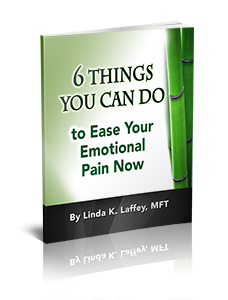Stigmas surround numerous aspects of life. From lifestyles to diets, from personal characteristics to mental health conditions, these nefarious blots are everywhere.
That said, trauma seems peppered with more stigmas than many other mental health conditions. A chief reason for this is that most people don’t genuinely understand what trauma is. So people tend to develop negative thoughts based on their assumptions.
As imagined, this approach can be incredibly damaging and even disrespectful to those who’ve experienced trauma. But stigmas don’t have to stick around. And they don’t have to keep people from getting the recovery help they need.
Here are a handful of sensible ways to quell trauma stigma.
1. Learn About Trauma
Victims of violence, wartime soldiers, or survivors of a natural disaster are typically the sort of individuals that society categorizes as “traumatized.” But trauma seeps into everyday life more than most people comprehend.
An excellent way to combat trauma stigma is to learn more about it.
Challenge your understanding of trauma by asking questions such as:
- What is trauma?
- Who can it impact?
- What are the signs of trauma?
- How do you overcome it?
The more you know about any topic, the better you can navigate it in your life and the lives of your loved ones.
2. Avoid The Puns
Plenty of jokes circulate about rape, PTSD, and even domestic violence. Strangely enough, the MeToo movement stirred up jokes, as well. The problem is that there is nothing—absolutely nothing—funny about trauma in the least bit.
Taking part in a joke or pun at the expense of someone else’s pain is cruel and highly unnecessary. Plus, it only puts a comical spin on real-life terror and suffering. What jokes often do to a trauma victim is to make their hurt feel like a joke—unimportant and irrelevant.
To help put an end to trauma stigma, stop laughing at, or making jokes about it.
3. Treat People as People
On the flip side, just because you’re not making a wisecrack doesn’t mean you have to walk on eggshells 24/7, either. It’s crucial to treat people as people rather than as breakable beings.
Yes, trauma exists, and it can cause a lot of damage to the victim. However, human beings are resilient. Healing from trauma is typically a doable feat, and yet, it’s harder to recover when those around you treat you as if you’ll shatter at any second.
Let’s face it; when you must tread lightly around another person, you tend not to socialize with them as often as others. It can be exhausting.
A better approach to overcoming trauma stigma is to treat people as people. They may be hurting, so respect that. But they still laugh and cry and breathe just like the rest of us, too.
4. Practice Acceptance
Lastly, consider your mindset when it comes to trauma. Perhaps you were raised in a “tough it out” environment or in a family dynamic that perceived hurting as a weakness. These standards will undoubtedly impact the way you approach trauma.
As with other stigmas, an excellent way to combat them is by practicing acceptance. Validate that person’s pain, hurt, suffering, scars, triggers, etc.
Remember, to validate doesn’t mean you put your stamp of approval on their experiences or how they’re responding to the trauma. Validating is merely a way of expressing, “I see you, and I see your hurt.”
Validation is acceptance at its best. And acceptance is a significant force in the battle against trauma stigma.
Take the first step…
If you are ready to address trauma that may be negatively impacting your life, I would like to help. Please contact me via phone or email so we can discuss how we might work together to achieve your therapeutic goals as quickly and effectively as possible.
I look forward to hearing from you.
Linda K. Laffey, MFT


